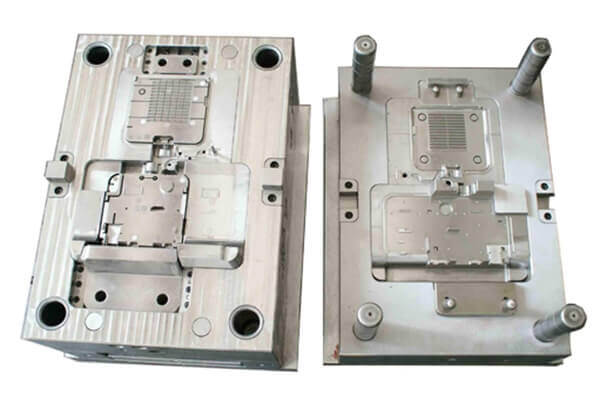© 2017-2019 Kunshan Feiya Precision Moulding Co., Ltd. All rights reserved. Site Map Designed by Alibaba
Precision injection molding is a kind of injection molding method, which is difficult to meet the requirements by using general injection molding machine and conventional injection molding process because of the high dimensional repetition precision of the injection molded products.
The concept of "precision injection molding" is mainly different from "conventional injection molding". It is based on the rapid development of polymer materials. In the field of instruments and electronics, precision plastic parts are used to replace high-precision metal parts. At present, there are two defining indexes for precision injection products: one is the repeat precision of product size, the other is the repeat precision of product quality. In this paper, the precision injection molding is mainly described from the aspect of dimension repeat precision. However, due to the different nature and processing technology of various materials, the accuracy of plastic parts cannot be equated with that of metal parts.
The mold of molding products is an important condition to determine whether the products can meet the dimensional tolerance required by the design, while the precision injection molding machine is the key equipment to ensure that the products are always molded within the required dimensional tolerance range, and to ensure a high yield.
The highest precision level of plastic products is level 3.

(1) High dimensional accuracy and small tolerance of the parts, that is to say, there are high-precision dimensional limits;
(2) The product weight has high repetition precision and requires dimensional stability of day, month and year;
(3) The material of the mould is good, the rigidity is enough, the dimensional accuracy, the finish of the mould cavity and the positioning accuracy between the formworks are high;
(4) Use precision injection machine to replace conventional injection machine;
(5) Adopt precise injection molding technology;
(6) Select materials suitable for precision injection molding.
The most important technical index to evaluate the products is the precision of injection molding products (dimensional tolerance, geometrical tolerance and surface finish of products). In order to produce precise plastic products, it is necessary to strictly control four factors, such as material selection, mold design, injection molding process, and operator's technical level.
Precision injection molding machine requires that the dimensional accuracy of products is generally within 0.01-0.001mm. Many precision injection molding machines also require high injection pressure and high injection speed. The clamping system is required to have enough rigidity and high clamping precision. The so-called clamping precision refers to the uniformity, adjustability, stability and repeatability of the clamping force, as well as the high opening and closing position precision. The pressure is required The force, flow, temperature and measurement can be accurately controlled to the corresponding accuracy. Multi-stage or stepless injection is adopted to ensure the reproducing conditions of molding process and the repeated accuracy of product size.
(1) Mold accuracy;
(2) Forming shrinkage;
(3) The temperature, humidity and fluctuation range of the product using environment.
It has high mechanical strength, good dimensional stability, good creep resistance and wide environmental adaptability.
(1) POM (polyoxymethylene) and carbon fiber (CF) or glass fiber (GF) reinforced POM. This material is characterized by good creep resistance, fatigue resistance, weather resistance, good dielectric properties, flame-retardant, easy to demould with lubricant.
(2) Nylon (PA) and GF reinforced PA66. Features: strong impact resistance and wear resistance, good flow performance, can form 0.4mm wall thickness products. GF reinforced PA66 has high heat resistance (melting point 250 ℃), and its disadvantage is hygroscopicity. Generally, it needs to be treated by humidity regulation after molding.
(3) Reinforced polyester, such as polybutylene terephthalate (PBT). Short molding time. The forming time is compared as follows: PBT ≤ POM ≈ PA66 ≤ PA6.
(4) Polycarbonate (PC) and GF enhanced PC. Features: good wear resistance, improved rigidity after reinforcement, good dimensional stability, weather resistance, flame resistance and molding processing.
There are four factors that affect the shrinkage: thermal shrinkage, phase transformation shrinkage, orientation shrinkage and compression shrinkage.
3.1 thermal shrinkage. Thermal shrinkage is the inherent thermal physical properties of molding materials and mold materials. The mold temperature is high, the product temperature is also high, the actual shrinkage will increase, so the mold temperature of precision injection should not be too high.
3.2 phase transformation shrinkage. The shrinkage caused by the crystallization of polymer and the reduction of specific volume during the orientation of crystalline resin is called phase transformation shrinkage. On the other hand, the increase of crystallinity will increase the product density, decrease the linear expansion coefficient and decrease the shrinkage. Therefore, the actual shrinkage rate is determined by the combined effect of the two.
3.3 orientation shrinkage. Due to the forced stretching of the molecular chain in the flow direction, the macromolecules have the tendency of re crimping and recovery when they are cooled, and will shrink in the orientation direction. The degree of molecular orientation is related to injection pressure, injection speed, resin temperature and mold temperature. But the main thing is the injection rate.
3.4 compression contraction and elastic reduction. Plastics are generally compressible. That is, the specific volume changes significantly under high pressure. At normal temperature, the specific volume, density, expansion coefficient and shrinkage rate of the products will decrease with the increase of pressure. Corresponding to the compressibility, the molding material has the function of elastic reset, which reduces the shrinkage of the product. The factors affecting the forming shrinkag